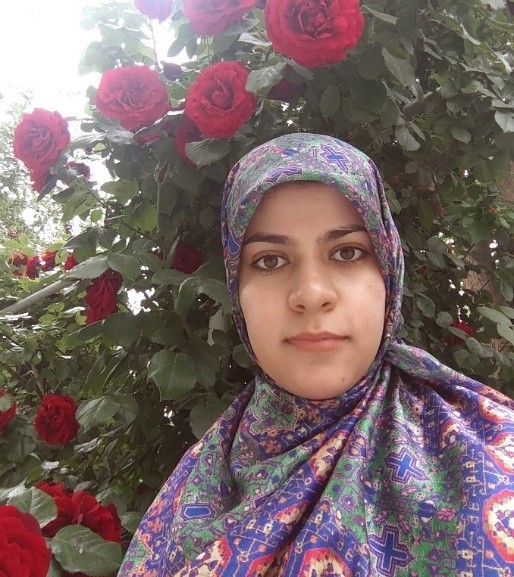Day 1 :
- cell gene therapy, Gene therapy, Stem cell
Session Introduction
Peisen Huang
Scientist in Sun Yat Sen University, China
Title: Combinatorial Treatment of Acute Myocardial Infarction Using Stem Cells and Their Derived Exosomes Resulted in Improved Heart Performance

Biography:
Dr. Peisen Huang has completed his MD and PhD in 2019 from Chinese Academy of Medical Sciences, Peking Union Medical College (PUMC) and won the title of outstanding graduate of PUMC. During 2017.09-2018.12, he did research in the University of North Carolina at Chapel Hill as a visiting scholar. Now he is a young clinical doctor and scientist in the department of Cardiology, the First Affiliated Hospital of Sun Yat-Sen University. He has published more than 10 papers in reputed journals and led several research grants.
Abstract:
Background: Bone marrow mesenchymal stem cells (MSCs) are among the most common cell types to be used and studied for cardiac regeneration. Low survival rate and difficult retention of delivered MSCs in infarcted heart remain as major challenges in the field. Co-delivery of stem cells derived exosomes (Exo) is expected to improve the recruitment and survival of transplanted MSCs.
Methods: Exo was isolated from MSCs and delivered to an acute myocardial infarction (AMI) rat heart through intramyocardial injection with or without intravenous infusion of atrovastatin-pretreated MSCs on day 1, day 3 or day 7 after infarction. Echocardiography was performed to evaluate cardiac function. Histological analysis and ELISA test were performed to assess angiogenesis, SDF-1 and inflammatory factors expression in the infarct border zone. The anti-apoptosis effect of Exo on MSCs was evaluated using flow cytometry and Hoechst 33342 staining assay.
Results: We found that intramyocardial delivery of Exo followed by MSCs transplantation (in brief, Exo+MSC treatment) into MI hearts further improved cardiac function, reduced infarct size and increased neovascularization when compared to controls treated with Exo or MSCs alone. Of note, comparing the three co-transplanting groups, intramyocardially injecting Exo 30 min after AMI combined with MSCs transplantation at day 3 after AMI achieved the highest improvement in heart function. The observed enhanced heart function is likely due to an improved microenvironment via Exo injection, which is exemplified as reduced inflammatory responses and better MSCs recruitment and retention. Furthermore, we demonstrated that pre-transplantation injection of Exo enhanced survival of MSCs and reduced their apoptosis both in vitro and in vivo.
Conclusions: Combinatorial delivery of exosomes and stem cells in a sequential manner effectively reduces scar size and restores heart function after AMI. This approach may represents as an alternative promising strategy for stem cell-based heart repair and therapy.
Genica Lynne C. Maylem
Neurology Resident in The Medical City, Philippines
Title: Clinical Profiles and Outcomes of Patients with Neurological Diseases Treated with Stem Cell Therapy: A Single-Center Experience in the Philippines

Biography:
Genica Maylem is a Neurology Resident in The Medical City, a JCI-accredited, tertiary hospital in the Philippines. ï‚· Mobile Number*: +63917-5032-192 ï‚· Category*: (Poster presentation) ï‚· Research Interest*: Neurogenetic
Abstract:
Background Neurologic disorders such as Parkinson's disease, Alzheimer’s, disease amyotrophic lateral sclerosis, multiple sclerosis, stroke, and spinal cord injury are caused by a neurodegenerative or neurologic cell injury processes. Stem cells offer the possibility of a renewable source of replacement cells and tissues as a form of innovative treatment in neuroregenerative medicine. Objectives This study aims to evaluate the clinical profile and outcomes of cellular therapy given to patients with neurologic disorders that will provide information with regards to the paucity of local data in stem cell therapy. Methods A retrospective review of the medical records of patients who underwent and completed cellular therapy were studied according to their clinical profiles and outcome in terms of functional status, subjective effects, and quality of life after the cellular therapy. Results Among the 48 neurologic cases enrolled, only 29 have completed and were included in the study. Majority of the patients treated are under neurodegenerative diseases like Parkinson’s disease and Alzheimer’s disease. Most patients are of the aging population. Clinical outcomes show that functional status of pre and post treatment has no significant difference, however there are subjective reports of improvements among the disease categories on post-treatment. No significant adverse effects noted. Conclusion Cellular therapy is a regenerative treatment that is available and feasible locally in our country. Cellular therapy may provide some improvement with regards to the signs and symptoms and impact the quality of life in patients with neurological diseases.
Nahal Shamaeizadeh
pharmacy faculty of Isfahan University of Medical Sciences, Iran
Title: Effective Therapeutic Strategy in Neurological Disease

Biography:
I am MSc student at pharmacy faculty of Isfahan University of Medical Sciences. My research field is about gene delivery for neurological disease.
Abstract:
Although there are many treatments for neurological disease, but they are not always curative and there are still intriguing aspects about effectiveness, mechanisms and safety. MicroRNA, a small non-coding RNA, regulates mRNA by direct binding through the 3′- untranslated region (3′UTR). These molecules are vital regulators in the nervous system. MicroRNAs play crucial roles in differentiation of oligodendrocyte progenitor cells, promoting oligodendrocytes maturation and remyelination and cognitive function so it can be a potential therapeutic option for demyelinating disease such as multiple sclerosis. Moreover, treating with antagonists of NMDA receptors reveal the undeniable role of microRNAs in schizophrenia. Additionally, miRNAs are clock regulators and modulate the length of the circadian-clock period. This leads to mood instability, which is implicated in the fluctuation of phases in bipolar patients. These molecules modulate tau toxicity in Alzheimer’s disease by decrease tau mRNA and downregulate synthesis of three tau kinases which leads to inhibition of abnormal hyper phosphorylation of tau. These small regulators have also protection effect against seizure through negatively regulation brain receptors. Furthermore, the studies demonstrated there is a correlation between Parkinson’s disease and miRNA down regulation. Some more studies proved overexpression of spinal miRNAs prevent and reverse chronic inflammation pain. On the other hand, Brain-enriched microRNAs can inhibit proliferation, suppress invasion, and induce apoptosis in tumor’s cell. In this review, we compare and summarize the microRNA therapeutic effects and mechanisms on the central nervous system disorders and illustrate how this information will change the future of gene therapy.
Zahra Keshavarz
Faculty of Pharmacy, Isfahan University of Medical Sciences, Iran
Title: Genome editing via CRISPR/Cas9, a new therapeutic strategy for brain disease

Biography:
Zahra is a Pharmacy student of Isfahan University of Medical Sciences starting her 7th year of study. She is interested in both pharmacognosy and biotechnology sciences.
Abstract:
Neurodegenerative diseases with a known genetic background, including Alzheimer’s disease (AD), Huntington’s disease (HD), Amyotrophic lateral sclerosis (ALS) and Central Nervous System (CNS) tumors are attracting researchers to utilize more efficient treatment system based on genome editing strategy. Current treatment approaches for CNS disorders are neurosurgery, radiotherapy and chemotherapy; however, none of these are completely considered effective even in combination therapy, so developing new therapeutic strategies is demanded. Genome editing is a group of technologies that allows scientists to make accurate, targeted changes to the genome in order to prevent, diagnose and treat human diseases. One of the most recent technology that is based on a bacterial nuclease is known as CRISPR/Cas9 which has generated considerable interest for future biomedical researches. While CRISPR/Cas9 is a simple method, it is faster and more effective than many other available genome editing tools. In the process of understanding neurodegenerative diseases, there are many detected signalling pathways in human genome, potential for genome editing. Recent studies have demonstrated that using CRISPR/Cas9 for regulating these signalling pathways leads to a promising novel therapeutic method. By genomic alterations we will be able to target many aspects of the neurodegenerative diseases such as inflammation, progression, proliferation, survival, invasion, migration, angiogenesis and drug resistance. In this review we summarize recent advances based on targeting signalling pathways by CRISPR/Cas9 tool and compare results with other treatment agents to evaluate its potency for introducing a novel and powerful therapeutic agent.

Biography:
Zeb Khan has over 20 years of experience working on quality systems and supporting operational quality for solid dosage and biologic product types. Her expertise is focused on creating efficient and compliant systems to support quality product. Zeb_Khan@vrtx.com
Abstract:
Comparability studies, governed by a higher-level comparability plan for an autologous product/process, are routinely executed through development and commercialization stages of a biological product. The factors driving such studies originate from introduction of changes in materials, methods, equipment, process and facilities.
The comparability plan should be established in accordance with the principles of ICH Q5E and other regulatory guidance to ensure that the introduced changes would not adversely impact the safety and efficacy of the final product. Risk assessment of impacts of proposed changes on product quality is a part of the comparability plan. This presentation will emphasize and discuss the
- Regulatory expectations for performing comparability studies
- Developing a strategy for implementation of comparability plan
- Challenges of carrying out comparability studies in autologous products
During early development stage, when a process/product is not validated yet, changes are targeted at either optimization of the product/process or required expansion of capabilities. One of the major discussions revolves around setting up acceptance criteria for a quality product that is deemed comparable. The comparability strategy primarily would focus on meeting established release criteria or a set of characterization tests would also be used to compare drug products. This decision is dependent on the exact change being evaluated. Meeting the predetermined acceptance criteria assures success for the process optimization and its transfer.
For an autologous product with a large and inherent variability in starting material being introduced from the donor, a comparability study might require running split run/s with the same starting material. There are no changes in scale for autologous products and all development, verification and qualification activities are performed at the scale of a single patient, which complicates the scenario of carrying out comparability studies in traditional ways
Irina Kadiyala
Vertex Pharmaceuticals Inc., USA
Title: Approach to comparability studies for cell-gene therapy autologous product from quality perspective and regulatory expectations

Biography:
Irina Kadiyala has about 20 years of manufacturing experience for different modalities through all development stages. For biological products, she has experience performing process optimization and comparability studies, which included putting in place a comparability plan for discussions with regulatory agencies. Email: Irina_Kadiyala@vrtx.com
Abstract:
Comparability studies, governed by a higher-level comparability plan for an autologous product/process, are routinely executed through development and commercialization stages of a biological product. The factors driving such studies originate from introduction of changes in materials, methods, equipment, process and facilities.
The comparability plan should be established in accordance with the principles of ICH Q5E and other regulatory guidance to ensure that the introduced changes would not adversely impact the safety and efficacy of the final product. Risk assessment of impacts of proposed changes on product quality is a part of the comparability plan. This presentation will emphasize and discuss the
- Regulatory expectations for performing comparability studies
- Developing a strategy for implementation of comparability plan
- Challenges of carrying out comparability studies in autologous products
During early development stage, when a process/product is not validated yet, changes are targeted at either optimization of the product/process or required expansion of capabilities. One of the major discussions revolves around setting up acceptance criteria for a quality product that is deemed comparable. The comparability strategy primarily would focus on meeting established release criteria or a set of characterization tests would also be used to compare drug products. This decision is dependent on the exact change being evaluated. Meeting the predetermined acceptance criteria assures success for the process optimization and its transfer.
For an autologous product with a large and inherent variability in starting material being introduced from the donor, a comparability study might require running split run/s with the same starting material. There are no changes in scale for autologous products and all development, verification and qualification activities are performed at the scale of a single patient, which complicates the scenario of carrying out comparability studies in traditional ways.
Emiliano Tesoro-Cruz
Mexican Social Security Institute, Mexico
Title: Ophthalmic administration of a DNA plasmid harboring the murine Tph2 gene: evidence of recombinant Tph2-FLAG and serotonin levels increased in brain structures

Biography:
Emiliano Tesoro-Cruz works for Immunology and Infectology research unit at the National Medical Center "La Raza", IMSS, Mexico. He has experience in the field of virology and participated in the development of a DNA vaccine against rabies by intranasal administration using animal models such as mice, rabbits, dogs and cats. Currently, his research aim is in the field of depression from a basic point of view, as well as clinic research. Specifically, in basic research, he proposes a gene therapy for depression, using non-viral vectors administered ocular and intranasally in animal models. In the field of clinical research, he is studying different TPH2 gene SNPs, which some of them have been reported with association for depression and suicide attempt. The TPH2 gene codes for the tryptophan hydroxylase type 2, the key enzyme for the brain serotonin biosynthesis.
Abstract:
Tryptophan hydroxylase-type 2 (Tph2) is the first, rate- limiting step in the biosynthesis of serotonin (5-HT) in the brain. The ophthalmic-administration (Op-Ad) is a non- invasive method that allows delivering genetic vehicles through the eye and reach the brain. In this work, the murine Tph-2 gene was cloned in a non-viral vector (pIRES-hrGFP- 1a), generating pIRES-hrGFP-1a-Tph2, plus the Tag- FLAG. Recombinant Tph2-FLAG was detected and tested in vitro and in vivo, where 25μg of pIRES-hrGFP-1a-Tph2- FLAG was Op-Ad to mice. The construct was capable of expressing and producing the recombinant Tph2-FLAG. Assays in vivo showed that the construct efficiently crossed the Hemato-Ocular-Barrier and the Blood-Brain-Barrier, reaching brain cells, passed the optical nerves, and transcribed mRNA-Tph2-FLAG in different brain areas. The recombinant Tph2-FLAG was observed in amygdala and brainstem, mainly in raphe dorsal and medial. Relative Tph2 expression of three-fold over basal level was recorded three days after Op-Ad. Besides, we have evidence that recombinant Tph2-FLAG was functional during the 5-HT biosynthesis; this was observed in vitro and in vivo. The 5HT levels were increased in HEK293 cells transfected (6.02ng/mL) vs control (2.87ng/mL) at 48 h after transfection. Moreover, in mice showed an increase with respect to the control: in the amygdala (325ng/mL//125ng/mL) and in the hypothalamus (104ng/mL//68ng/mL), respectively. These results demonstrated that IRES-hrGFP-Tph2-FLAG, administrated through the eyes was capable of reaching the brain, transcribing, and translating an exogenous Tph2 gene. In consequence the 5HT was increased in amygdala and hypothalamus at seven days after treatment. In conclusion, this study showed the feasibility of delivering therapeutic genes, such as the Tph2, the first enzyme, rate- limiting step in the 5-HT biosynthesis. Besides, these results support the possibility to use this innovative idea with therapeutic purposes and could be a strategy for those patients that possess risk TPH2 SNPs associated with depression disorder, and suicidality
Peisen Huang
Peking union medical college, China
Title: New generation of mesenchymal stem cells-based therapy for acute myocardial infarction: from bench to bedside

Biography:
Despite stem cell therapy has, for past two decades, emerged as one of the most promising therapeutic strategies to repair or regenerate post infarct myocardium, meta-analysis of randomized clinical trials indicated that cell therapy increased left-ventricular ejection fraction (LVEF) by just 3.17% in patients with acute myocardial infarction (AMI). The low recruitment, poor survival and limited engraftment of transplanted mesenchymal stem cells (MSCs) in the ischemic environment are still the main hurdles that limit the therapeutic potential of MSCs. For the past decade, our studies demonstrated that atorvastatin (ATV) treatment improved the survival of MSCs, and ATV pretreated MSCs (ATV-MSCs) exhibited enhanced engraftment to injured myocardium. Our recent studies found that combined treatment with ATV and ATV-MSCs or multiple ATV-MSCs transplantation significantly enhanced the targeted recruitment and survival of transplanted MSCs, and resulted in subsequent cardiac function improvement by augmenting SDF-1/CXCR4 signaling. Exosomes obtained from ATV-MSCs also have significantly enhanced therapeutic efficacy for treatment of AMI through lncRNA H19/miR-675 mediated endothelial cell function regulation passway. We also test the efficacy of such kind of ATV treatment combined stem cells transplantation in patients suffering from anterior ST-elevated myocardial infarction (STEMI) and found significantly increased LVEF change values of 7.6% compared with control group. These strategies of enhancing therapeutic efficacy by ATV treatment represent the new generation of MSC-base therapy, which can achieve enhanced recruitment and survival of transplanted cells and also convenience for clinical application.
Abstract:
Despite stem cell therapy has, for past two decades, emerged as one of the most promising therapeutic strategies to repair or regenerate post infarct myocardium, meta-analysis of randomized clinical trials indicated that cell therapy increased left-ventricular ejection fraction (LVEF) by just 3.17% in patients with acute myocardial infarction (AMI). The low recruitment, poor survival and limited engraftment of transplanted mesenchymal stem cells (MSCs) in the ischemic environment are still the main hurdles that limit the therapeutic potential of MSCs. For the past decade, our studies demonstrated that atorvastatin (ATV) treatment improved the survival of MSCs, and ATV pretreated MSCs (ATV-MSCs) exhibited enhanced engraftment to injured myocardium. Our recent studies found that combined treatment with ATV and ATV-MSCs or multiple ATV-MSCs transplantation significantly enhanced the targeted recruitment and survival of transplanted MSCs, and resulted in subsequent cardiac function improvement by augmenting SDF-1/CXCR4 signaling. Exosomes obtained from ATV-MSCs also have significantly enhanced therapeutic efficacy for treatment of AMI through lncRNA H19/miR-675 mediated endothelial cell function regulation passway. We also test the efficacy of such kind of ATV treatment combined stem cells transplantation in patients suffering from anterior ST-elevated myocardial infarction (STEMI) and found significantly increased LVEF change values of 7.6% compared with control group. These strategies of enhancing therapeutic efficacy by ATV treatment represent the new generation of MSC-base therapy, which can achieve enhanced recruitment and survival of transplanted cells and also convenience for clinical application.

Biography:
I am 21 year old student in the field of Biotechnology. I am studying in final year of Masters of Biotechnology. I’ve worked on review paper that talks about prestin protein interaction in outer hair cells that is verge of publication in Advances of Bioresearch journal. I working as a project trainee in National Environmental Engineering Research institute and working on gutta percha effect on root canal.
Abstract:
ATR mediates several functions during the DNA damage and as a result of replication fork gets stalled up. This will not allow the replication fork to transit through other phases of the cell cycle. Consequently, DNA synthesis will not carry out further. This ubiquitous kinase has known to exhibit anti- cancer effects found in a recent study. The most powerful and unique technique CRISPR- Cas9 has been utilized to analyse the effect of ATR on cancerous cells. Inhibition of ATR leads the hampering of DNA repair pathways of cancer cells thus showing anti- cancer effects. AZD6738, a potent ATR inhibitor applied to single guide RNA screens to check the activity on cancer cells. Probably, this was conjugated with CRISPR technique which gave significant results. Another unique molecule RNASEH2 when reduces in absence ATR kinase induces DNA damage, apoptosis and senescence. This review juxtaposed the anticancer effects in mammalian and mouse cells and indicated ATR to be important molecule in diagnosis of cancer.
Yasameen M Abbas
Clinical pharmacist in the ministry of health of Iraq, Iraq
Title: Antibiogram results in Basra teaching hospital: prolonged hospitalization due to bacterial resistance

Biography:
I am MSc student at pharmacy faculty of Isfahan University of Medical Sciences. My research field is about gene delivery for neurological disease.
Abstract:
27% of patients in our hospitals suffer from prolonged hospitalization due to resistant infections and since Antibiogram is a collection of data usually in the form of a table summarizing the percent of individual bacterial pathogens susceptible to different antimicrobial agents it was an important key solution to make studies on it to follow the percentage of augmentation of antibiotics resistance
An Antibiogram is generated after bacteria are isolated ( from a patient's tissues or body fluids) and subjected to laboratory testing.
Antibiogram is often used by clinicians to assess local susceptibility rates, as an aid in selecting empiric antibiotic therapy. Antibiogram is used to monitoring resistance trends over time in hospital, Antibiogram can also be used to compare susceptibility rates across hospitals .in this study we collect the data of 595 patient and collected from July 2018 to April 2019 and by using laboratory BACT/ALERT and Vitek instrument. the result of antibiotic sensitivity test of E coli in urine samples for Trimethoprim/sulfamethoxazole was 16%, for Ciprofloxacin was 87%, for Gentamicin was 77% ,for Amikacin 100%, for Nitrofurantoin 100% and for Meropenem 100% however antibiotic sensitivity test of staphylococcus aureus in blood samples for Benzyl penicillin was zero, for Levofloxacin 93%, for Vancomycin 93.7%, for Gentamicin was 100% and for clindamycin 81%. As a conclusion Trimethoprim/sulfamethoxazole for urinary tract infection and Benzyl penicillin for staphylococcus infection was significantly inactive, gentamicin for urinary tract infection and ciprofloxacin for staphylococcus infection were partially active while the rest of antibiotics mentioned above are significantly still active.
Ala’a S. Shraim
Al-Ahliyya Amman University, Amman, Jordan
Title: Developing and Characterization of Chemically Modified RNA Aptamers for Targeting Wild Type and Mutated c‑KIT Receptor Tyrosine Kinases

Biography:
Dr. Ala’a S. Shraim is an Assistant Professor at the Faculty of Allied Medical Sciences, Al-Ahliyya Amman University in Jordan. She is working in aptamer technology, particularly in developing and characterization of aptamers against kinases. She has built her expertise after years of experience in research, evaluation, and teaching in academic institutions
Abstract:
The c-KIT is a transmembrane receptor tyrosine kinase that plays a crucial role in cancer progression. Deregulation of c-KIT has been detected in several human cancers. In particular, the two point mutations D816V and D816H in the kinase domains which induce ligand-independent activation of the kinase activity and acquired drug resistance. Therefore, c-KIT represents an attractive target for cancer therapy. Aptamers are emerging as a new promising and innovative class of nucleic acid therapeutic agents. In our study, a conventional SELEX approach was applied against the kinase domain of a group of c-KIT proteins (c-KIT WT, c-KIT D816V, and c-KIT D816H) to select RNA aptamers from a random RNA pool that can bind to the kinase domain of each c-KIT protein with high affinity and can selectively interfere with their kinase activities. Interestingly, our experimental data indicated that one of the candidate aptamers, called V15, can potently and specifically inhibit the in vitro kinase activity of mutant c-KIT D816V with an IC50 value that is 9 fold more potent than the FDA approved sunitinib drug tested under the same experimental conditions. Kinetic analysis revealed that V15 aptamer inhibits the kinase activity of the tested c-KIT kinases in a non-competitive manner. Another aptamer, named as H5/V36, showed the potential to functionally distinguish between the c-KIT WT, c-KIT D816H, and c-KIT D816V kinases by modulating the phosphorylation activity of each in a distinct mechanism of action and in a different potency. Finally, H5/V36 aptamer also revealed significant selectivity, since almost no inhibitory activity was detected after testing against two closely related kinases: PDGFRβ and JNK3 kinases. Taken together, our results suggest that these RNA aptamers may serve as a platform for the future development of novel aptamer-based targeted therapies for cancer.

Biography:
Abstract:
